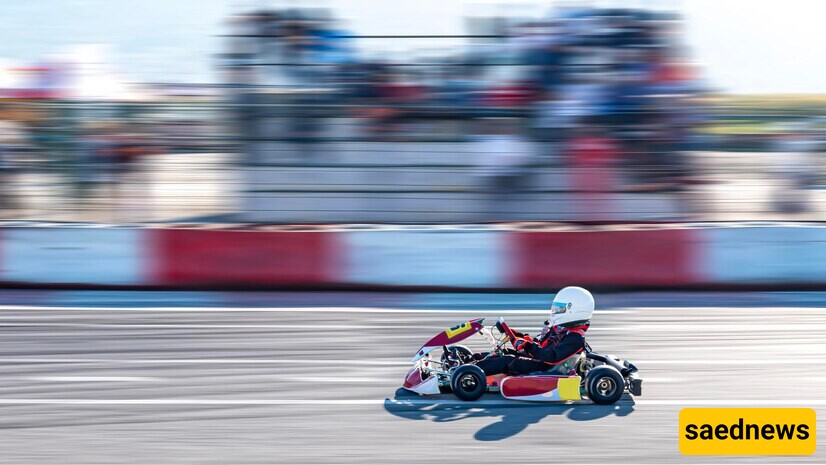SAEDNEWS: Surely, you’ve experienced the thrill of speed—pressing down on the gas pedal and driving through winding paths creates exhilarating moments. Karting is one such thrilling sport and recreational activity that you should try at least once during the holidays.


Karting or kart racing is a motorsport involving open-wheel vehicles called karts. These small, four-wheeled vehicles with open wheels are known as "karts." Races are held on kart tracks, which are smaller replicas of real highways. Karting is often seen as the entry point to more expensive motorsports. Indoor karting refers to tracks located inside buildings, while outdoor karting is in open spaces.
Essentially, karting is considered the "mother" of motorsports, offering an enjoyable driving experience with 125cc karts. Professional karting can reach speeds of up to 180 km/h, but rental karts for casual drivers are limited to 70 km/h. The term "rental" refers to karts available for public use. For anyone wanting to experience high-speed driving, renting a kart is an ideal opportunity.
The first kart was built in August 1956 by Art Ingels in California, USA. It was a small car with a tubular chassis powered by a lawn mower engine.
Karting has established itself as a popular sport worldwide. Iconic names in motorsport, like Michael Schumacher, began their careers in karting. But does karting have to be a professional pursuit? Can it simply be a recreational activity? Absolutely. You don’t have to be a professional or even hold a driver’s license to enjoy karting. Both men and women can enjoy this experience, as karts are suitable for all.
Karts come in two main types: rental karts for beginners and race karts for professionals. Rental karts allow everyday people to enjoy speed after just a five-minute training session. They don’t exceed speeds of 70 km/h. Race karts, designed for competition, can reach speeds of up to 180 km/h. Children as young as six or seven can start karting, with different kart sizes available for various age groups.
If you’re ready for this exciting activity, head to a karting track. By paying a fee, you’ll be provided with the necessary equipment for a limited time (usually 6 to 10 minutes, depending on track rules). Beginners are also given a brief training session covering karting flags and their meanings. These flags are primarily used for race tracks and may vary by location.
For a professional karting experience, you’ll need:
A one-piece racing suit
A personal helmet
A race kart
Access to kart parking (available for rent at tracks)
A dedicated mechanic (available at tracks)
Enrollment in beginner and professional training courses
Passing tests to obtain a karting license
Modern karting owes its existence to Art Ingels, an American known as the "Father of Karting." A seasoned race car builder for Kurtis Kraft, Ingels created the first kart in 1956. Unlike today’s models, it was a small, tubular car powered by a lawn mower engine. Within a year, production reached 500 units per month, leading to the first official karting competition in 1959 in Nassau, Bahamas. Jake Yaman, an American, won the championship. The sport quickly gained popularity worldwide and became especially beloved in Europe.
The first official kart manufacturer, Go Kart Manufacturing Co., started in 1958, followed by McCulloch, which began producing engines in 1959, inspired by chainsaw motors. By the 1960s, motorcycle engines were adapted for karting, and Italian manufacturers began producing specialized engines for the sport. The World Karting Championships officially started in 1964, with Italy’s Sala Gaidoy winning the first title.
Karting reached Iran 45 years after its global debut, introduced by two Iranians. The national karting championships are held annually in ten stages, and top performers represent Iran in international competitions. Iran participated in the World Championships for the first time in 2006 in Japan, achieving its greatest success in 2010 in Italy.
Karting has gained popularity across Iran, with tracks in many cities, including:
Tehran: Azadi, Parand, Danial, Farasa, Shahrbanoo, and the Auto Museum tracks
Mashhad: Ershad and Jam Jam tracks
Isfahan: Parsa, Roya, and Young Garden tracks
Mazandaran Province: Ramsar, Namak Abrood, and Babolsar tracks
Gilan Province: Heiran Pass and Rasht tracks
Hormozgan Province: Kish track
Like many sports, karting faces challenges due to a lack of sponsorship. From car manufacturers to oil companies, the absence of financial support exacerbates the high costs of karting. For example, kart tires wear out quickly and need frequent replacement, adding significant costs. International tracks use soft or airport-grade asphalt, unlike Iran, where parking lots are often converted into tracks. Maintenance expenses and the lack of sponsors hinder the sport’s rapid growth in the country.

